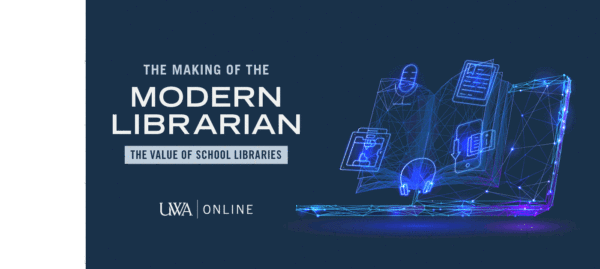A virtual reality field trip. A lesson on how to create a podcast. A tutorial on how to create a paper circuit board that uses LED lights. For a new generation of educators, these pursuits have something in common: They’re all appropriate learning exercises that can take place in the school library. Makerspaces, or library media centers that encourage collaboration and support student invention, are on the rise across the United States.
This has always been the case, but in a prevailing learning culture that promotes outside-the-box problem solving, these activities are growing more common in the 21st-century school library. At the intersection of analog and digital learning opportunities, the value of school libraries has increased at all levels of education. And at the helm of these spaces, school librarians must negotiate how best to support students with library resources, adapt to new technological advancements in education and pass on the fundamental tenets of digital and information literacy to students.
As the U.S. public education system has evolved throughout its history, school libraries have also developed with a consistent central goal: to give students the best opportunity to succeed academically.
The Evolution of the School Library
Before school libraries would begin to morph into multimedia digital information centers, they supported student literacy-building practices by providing access to their on-site book collections. From the first plans for a school library in the United States drafted in 1743 by Benjamin Franklin, school district libraries would continue to sprout across the nation during the next two centuries. By the mid-1950s, schools would adopt localized, attached libraries in which librarians are considered qualified teachers, educating both students and instructors.
The face of public education has fundamentally changed since then, through the nationwide integration of schools, the rapid progress of education technology and the academic opportunities offered to students, to name a few. Because of these dramatic changes to the world of education, the expectations and responsibilities of school library faculty have understandably seen a dramatic shift as well.
Today, school librarians are not only responsible for administering and collating their collections. Instead, librarians promote creativity and discovery in student learning by offering multimedia resources. With school libraries beginning to function as digital media centers, these tools enable students to explore new modes of thought and include:
- Planning, drafting and executing podcasts or audio essays
- Access to audiobooks and online tutorials
- Online or in-person tutorials on how to use video-, audio- or photo-editing software
- Workshops on internet and information literacy
Modern Librarian Roles and Responsibilities
With these new responsibilities, librarians now occupy a multitude of additional roles, too. The Association of College and Research Libraries, which is an organization of college educators and librarians and a division of the American Library Association, lays out the seven roles of librarians in school systems today. The goal with highlighting these different titles librarians must take on is “to conceptualize and describe the broad nature and variety of the work that teaching librarians undertake as well as the related characteristics which enable librarians to thrive within those roles.”
While these roles were drafted to appeal specifically to university and college librarians, they are universal enough to be relevant to school librarians working in primary and secondary school media centers, too.
- Advocate – As advocates, library teachers are responsible for encouraging and outwardly supporting the advancement of student learning and information and digital literacy in education. Moreover, school library faculty must partner with administrators and teachers to ensure students adopt effective critical thinking and research skills.
- Coordinator – In order for a library to run smoothly and enable students to engage with different literacies, school librarians must facilitate an inclusive and supportive learning environment. This means that coordinators need to make a point to stay on the same page as teachers, administrators and parents to serve students best.
- Instructional Designer – Library materials often carry the unfair stigma of being boring. And it makes sense – the image of the uptight librarian has persisted through the past century. In the current technological landscape, though, librarians are positioned to provide students engaging, dynamic library resources as instructional designers. As instructional designers, librarians collaborate with teachers to develop learning materials to reach students best.
- Lifelong Learner – Librarians as lifelong learners lead by example. Lifelong learning librarians can motivate students through an unrelenting pursuit of knowledge, which can inspire students to engage in independent research curiosities.
- Leader – School librarians must lead not only in their library spaces but, additionally, across an array of contexts. As leaders, librarians are prepared to guide students through reading and research processes at the same time that they offer necessary support to teachers.
- Teacher-Librarian – As teachers, librarians evaluate the best kind of learning practices for students, faculty and administrators. In other words, school librarians should be trained educators charged with providing information literacy opportunities to learners across an array of contexts. For example, while librarians help students understand how to navigate databases to collect research, they also provide support to teachers to educate their students on the best informational and digital literacy practices.
- Teaching Partner – To highlight the importance of collaboration, librarians should work as teaching partners with other educators in the school to build engaging learning materials for students. This collaboration can take place in the form of guiding a class discussion, creating assignments and responding to student work.
- 6 benefits of immersive learning with the metaverse - March 14, 2023
- 4 Practices for Innovative School Leaders - August 24, 2022
- Building a Successful Certification Program at Your Institution - August 22, 2022

